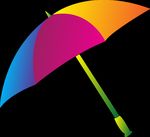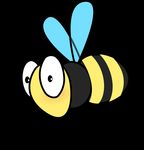STUDENT LESSON GUIDE 2021 - 2022 - Evansville Philharmonic Orchestra
←
→
Page content transcription
If your browser does not render page correctly, please read the page content below
2021 - 2022
presents:
r
s t ra
e
rc h e
monic O
m m
ilhar
u
l l e Ph
S
s v i
The Evan
So u n d s of
STUDENT
LESSON GUIDEWELCOME TO THE “SOUNDS OF SUMMER” Who doesn’t love the summertime? With activities like swimming and playing outdoors coupled with seemingly endless days, summer can truly be one of the best times of the year! Throughout the month of July, the Evansville Philharmonic Orchestra is excited to present its new “Sounds of Summer” educational series. This series is specifically geared toward elementary school stu- dents in kindergarten through fifth grade and will teach us all how we can embrace the hot temperatures by using music to learn about summer weather, activities, and more! This series will feature some of the talented musicians of the Evansville Philharmonic Orchestra as they present short performances at various locations throughout the community. Each performance will revolve around a specific summer theme and will include online student activities to complete following each per- formance. Through this series, the Evansville Philharmonic Orchestra aims to: • Maintain a high level of community engagement with students and their families throughout the EPO’s off-season. • Help students discover music associated with special summertime activities and occasions. • Guide students through explorations of musical examples that support other disciplines. Feel free to attend these performances in person or listen back at your convenience on the Evansville Phil- harmonic Orchestra’s website. Performance videos and student activities found in this packet will be avail- able for download at https://evansvillephilharmonic.org/education/sounds-of-summer/. This packet is full of fun activities related to the summer and features exciting information about the musical works, composers, and EPO artists you will hear throughout this series. We are so excited for you to join us and learn more about the “Sounds of Summer” with the EPO!
“SOUNDS OF SUMMER” SERIES SCHEDULE
Friday, July 9th
Evansville Public Library (Oaklyn)
3001 Oaklyn Dr.
Evansville, IN 47711
10:00 - 10:30 AM
Thursday, July 15th
Friedman Park, West Pavilion
2700 Park Blvd.
Newburgh, IN 47630
10:00 - 10:30 AM
Wednesday, July 21st
Evansville Public Library (Central)
200 S.E. Martin Luther King Jr. Blvd.
Evansville, IN 47713
Time 10:00 - 10:30 AM
Friday, July 30th
Willard Library
21 N First Ave.
Evansville, IN 47710
10:00 - 10:30 AM
Saturday, July 31st
Children’s Museum of Evansville (cMoe)
22 SE 5th St
Evansville, IN 47708
10:30 - 11:00 AMLesson 1.1 “Somewhere Over the Rainbow...”
Featuring EPO musicians: Isabel Kwon, cello
Richard Li, cello
One of the first musical selections you will hear at today’s performance is a song called “Over the Rainbow,”
made popular by Judy Garland in the 1939 film The Wizard of Oz.
A rainbow is a multicolored arc that forms in the sky after it rains. Have you ever seen a rainbow before?
If so, what colors did you notice?
List any colors you remember seeing in the rainbow below:
As you just learned, a rainbow forms when light shines through water. This light is bent and reflected, similar
to our reflections in a mirror, and creates all of the amazing colors we see in a rainbow.
Rainbows are made up of seven (7) primary colors that come from light. These colors are red, orange,
yellow, green, blue, indigo, and violet. A great trick that is used by many people to remember these colors is
an acronym that sounds like someone’s name:
R OY G. B I V
FUN FACTS ABOUT RAINBOWS:
• Did you know that we can’t actually touch rainbows?
They are made up of light, which is not a physical object
that we can grab onto.
• There is no end to a rainbow! Even though a rainbow
looks like an arc, they are actually full circles.
• Earth is the only planet in our vast solar system where a
rainbow is possible.
Actress/singer Judy Garland
“Dorothy” in the Wizard of OzLesson 1.1 Activity Using the colors discussed in this lesson (Roy G. Biv), color your own rainbow and post it on the fridge for all of your friends and family to see!
Lesson 2.1 “What’s the Buzz About Summer?”
Featuring: The Old Dam Community Band’s “Big Brass Quartet” (BBQ)
For week two of our Sounds of Summer series, the Evansville Philharmonic Orchestra wanted to introduce
you to some brass instruments! To make a sound on a brass instrument, players must put their lips together
and blow air through a small opening to create a “buzz”. When paired with a brass mouthpiece, this buzzing
noise creates the sounds we hear from different brass instruments in the orchestra!
Can you think of any other noises you might hear in the summer time that also sound like a “buzz”?
If you were thinking about a bee, that is correct! But, what makes a bee “buzz”?
Did you know?
A bee’s wings stroke nearly 11,400 times per minute, thus making their distinctive “buzz” sound.
Beyond the noises made by bees, these insects are vitally important to our environment and the food we
consume. Nearly one third of the food that we eat on a daily basis requires pollination by bees and other
insects/animals. Different fruits and vegetables require pollination to grow properly. For example: avocados,
broccoli, celery, cucumbers, peaches, kiwis, cherries, and melons all require pollination.
What is pollination?
Pollination is the act of transferring pollen from one flower to another in hopes of making seeds. Seeds help
to continue the growth of various flowers and plants. Bees will collect pollen by sticking it onto their bodies
and then flying to a new flower to distribute the pollen accordingly.
What about the honey?
Yes, you may have heard that honey also comes from bees. This is
true! Bees collect a sugar-like juice from the flowers they visit
called “nectar”. This nectar is kept inside the bee’s stomach until they
go back to the hive and turn it into honey with the help of different
worker bees.
Honey is a delicious treat enjoyed by many people worldwide! It is
most commonly used at breakfast time or stirred into a cup of tea
or coffee to add an additional layer of sweetness.Lesson 2.1 Activity You will need the following items to complete the activity for Lesson 2.1: • Pen or pencil • Scissors • Piece of paper • Popsicle stick • Clear tape • Powdered sugar, granulated sugar, or salt • Two plates First, you will need to draw a picture of a bee and give it some color if you wish. You can also feel free to print the bee image found on the next page and use it as your own for this activity. Once you have cut out and colored your bee, take your popsicle stick and tape it to the back of your bee. While you have your bee turned over, go ahead and place a few extra pieces of tape (sticky side out) on the wings of your bee. This will help the pollen stick to our bee just like it would in the wild! Now, take your pollen (powdered sugar, granulated sugar, or salt) and place it on one of our plates. These plates will serve as our flowers and it is time for us to pollinate! Gently dip the sticky side of your bee into the pollen and work carefully to transfer the pollen to your second plate. See if you can successfully get all of the pollen from one plate to the next. Try keeping the plates close together, then spreading them far apart. How easy is it to travel long distances with pollen? Did you drop some along the way to your flower? You should now have a deeper understanding of what a bee does to keep flowers growing in our environ- ment. And without bees, this process would be extremely difficult. Do you think we would have all of the pretty flowers outside if we did not have any bees? Why?
You can also read


























































